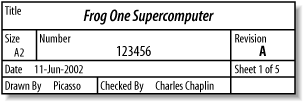Understanding Schematics
You won’t get very far in
electronics unless you know how to draw and read schematics. They
crop up everywhere, and understanding them is a must. The schematics
are like an architect’s blueprint. They show what
components will be used in a circuit and how they are connected
together. The schematics may also include other information such as
construction directives.
A
schematic may have a list of revisions indicating what changes have
been made to the original design. These are commonly called
Engineering Change Orders, or
ECOs for short. As a design grows and changes
over time, it’s a good idea to keep track of what
changes were made and, just as important, why
they were made. Just as commenting source code is important, so is
keeping track of the ECOs.
You will come across two types of schematics. You will see schematics in datasheets, books like this one, and other technical documents. These schematics will just show the circuit (or partial circuit), maybe a note or two, and that’s all. The other sort of schematic is the actual drawing(s) used to generate a circuit board. These schematics represent a full system design and will often have a title block located in the lower right of the sheet, indicating what the sheet represents, as well as who drew it and when. Figure 2-39 shows an example title block.

Figure 2-39. Title block
Essentially there are two ...
Get Designing Embedded Hardware now with the O’Reilly learning platform.
O’Reilly members experience books, live events, courses curated by job role, and more from O’Reilly and nearly 200 top publishers.

